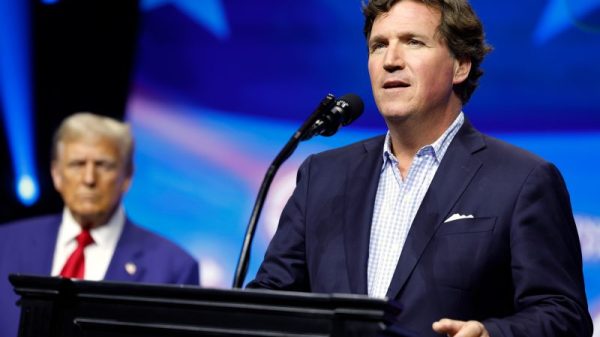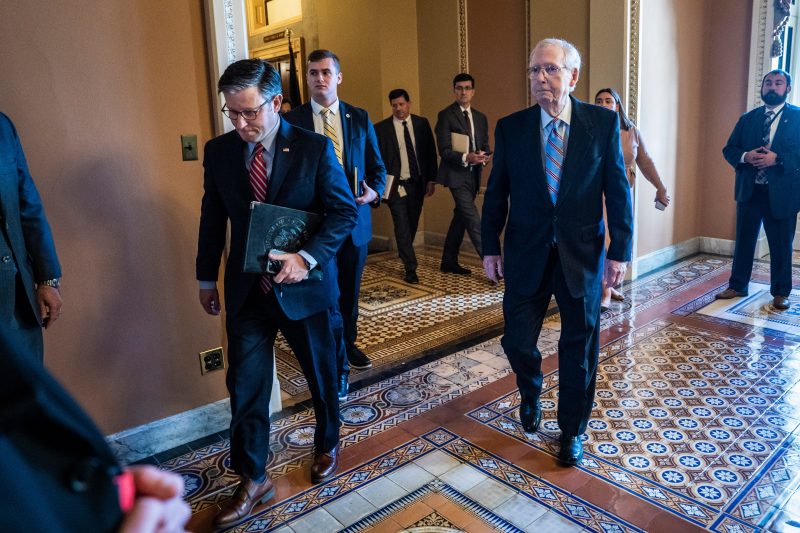Once the House on Thursday finished kicking the can on government funding until early March, lawmakers did what almost comes naturally at this point.
They left town for a 10-day break, not returning until the night of Jan. 29.
Exempting half-days that are scheduled for traveling into or out of Washington, the House has only five full legislative days on its calendar before lawmakers leave Feb. 16 for what is slated to be an almost two-week break from the Capitol.
The original schedule had lawmakers returning the night of March 5, at which point the House would have already missed the first deadline for funding 20 percent of the government. On Friday, House GOP leaders announced that they would bring members back to the Capitol a few days early, so they can approve something by the March 1 deadline.
Senators, for their part, have only a slightly busier schedule despite their very heavy workload. They’ll be in Washington this coming week, followed by two shortened workweeks with each having just one full day to consider legislation. In addition to trying to pass all 12 bills that fund the government, Senate leaders also want to consider a critical, and controversial to some, $110 billion national security package.
Yet their current schedule has senators leaving town the afternoon of Feb. 8 and not returning until the evening of Feb. 26, a two-and-a-half-week break to honor Presidents’ Day.
All told, between now and late February, the House and the Senate will be in session at the same time just seven days, several of those coming on shortened fly-in/fly-out travel days.
Veteran lawmakers of both parties see another train wreck coming and the need for possibly another short-term bill — three of which have been approved since Sept. 30 — to punt the final decisions deeper into the spring.
“I think that’s where we’re headed, unless something dramatic happens,” Sen. Dick Durbin (D-Ill.), the majority whip and a senior member of the Senate Appropriations Committee, said as he left the Capitol on Thursday.
Sen. Susan M. Collins (Maine), the top Republican on the spending panel, voiced some hope that the committees could finish their work if only top lawmakers would decide how to divvy up the agreed-upon figure of $1.66 trillion in overall funding for federal agencies.
But the whiplash schedule sure isn’t helping, Collins told reporters Thursday. “It would be helpful if there were better coordination on the schedule.”
To be sure, the blame should not fall entirely on the people who produce the annual calendars for Congress — usually the offices of the House and Senate whips, in consultation with the House speaker and Senate majority leader. Those aides get to work on the calendars in the fall and release them by early December so rank-and-file members can plan their year ahead of time.
Back then, as Collins noted, House leadership was just coming out of a three-week paralysis after ejecting Kevin McCarthy (R-Calif.) as speaker and Republicans choosing three failed nominees before finally landing on the new speaker, Mike Johnson (R-La.).
“There was a lot of chaos in the House as far as leadership at that point,” she said.
But just as important, ever since, has been congressional leadership moving in slow motion, without a sense of urgency. Johnson has been learning on the job and trying not to offend the far-right corner of his caucus, sometimes spending days or weeks haggling with those 15 or so archconservatives before making decisions.
That has left Senate Majority Leader Charles E. Schumer (D-N.Y.) to focus on confirming presidential nominees and nudging along negotiators on the security package to bolster defenses of Ukraine, Israel and Taiwan that also includes a legislative deal related to the U.S.-Mexico border.
Johnson formally took the speaker’s gavel Oct. 25, midway through an initial 47-day bridge for government funding. He tried to stick with the very conservative fiscal outline his far-right flank favored, but he could pass only three funding bills before his ideological wings fought and ended that process.
So Johnson agreed to another “continuing resolution” that funded the government in two chunks, until Friday and then Feb. 2, but then Congress left town for a nearly two-week break over Thanksgiving. Upon returning, Johnson decided to negotiate with the Senate over a new top-line funding level so that each chamber could pass their spending bills — and then no decisions were made till Jan. 7.
And that wasn’t much of a negotiation: Johnson merely agreed to the numbers that McCarthy and President Biden had already settled on back in May in a debt-and-budget deal.
By delaying that not-very-hard decision many weeks, leaders wasted much of the winter and have extended this annual ritual of funding the government possibly into the spring.
Some Republicans blame Johnson for living in fear of those far-right lawmakers, which draws out the process and increases tensions rather than quickly ending this particular funding battle.
“If we keep extending the pain, creating more suffering, we will pay the price at the ballot box,” Rep. Patrick T. McHenry (N.C.), a senior Republican who served as acting speaker during the October tumult, told reporters Thursday. “At this point, we’re sucking wind because we can’t get past the main object in the road. … We need to get the hell out of the way. Cut the best deals we can get and then get on with the political year.”
Instead, House Republicans have set themselves up with at least seven more weeks of haggling over these agency budgets. Now two weeks since agreeing to stick with the original $1.66 trillion outline, congressional leaders and top members of the Appropriations committees have yet to agree on slicing up that pie, which is the only way for Congress to then approve the 12 bills covering all the agencies.
“I have no insights as to why it’s taking so long,” Collins said.
Sen. Patty Murray (D-Wash.), chair of the Senate spending panel, suggested that one or two of the dozen allocations were hung up in a partisan squabble and that has delayed everything else, because lawmakers need to settle precisely on how much money each pot gets before they can finish writing the appropriations.
“We can’t get the 12 bills passed until we agree on the 12,” Murray said.
Senior staff will, of course, remain in Washington and continue these negotiations, but at certain points, when issues get the most contentious, committee chairs and congressional leaders need to be in the same room together to make the calls.
With the House out of session till the end of January, and the Senate leaving Feb. 8 for half of that month, there won’t be much time to make these decisions and then decide how to process all the spending bills.
There is broad agreement that lawmakers want to finish their work — just 13 senators, all conservative Republicans, voted Thursday to simply extend current funding levels until the end of the fiscal year, against 82 pushing for a final budget — but they just keep going in circles.
It’s normal for Congress to blow past the Sept. 30 statutory deadline for funding the government, but lawmakers usually finish up before Christmas after passing a couple of “CRs” to avoid a shutdown.
House Republicans, beginning in McCarthy’s tenure as speaker, have vowed to not ball up all 12 appropriation bills into one massive package and approve it, a ritual that insiders call passing an “omnibus” funding bill. Those packages often get released with thousands of pages and only a few days for review, and with conservatives complaining they’re being held hostage ahead of the holiday break.
Now, through House gridlock and Senate inaction, Congress has blown well past the holiday season and might need to approve another CR in March to buy more time. That would violate Johnson’s original pledge in mid-November to not approve any more of these piecemeal plans.
Each vote comes with more pain for House Republicans, whose vote tallies keep dropping. In May, almost 150 GOP lawmakers voted for the McCarthy-Biden deal, a number that dropped to 107 on Thursday, with 106 Republicans voting against the stopgap bill.
Some just want to move on.
“To draw out the calendar doesn’t actually help produce political wins, and it’s not actually shown to create policy wins,” McHenry said. “I’m here for policy wins.”




























